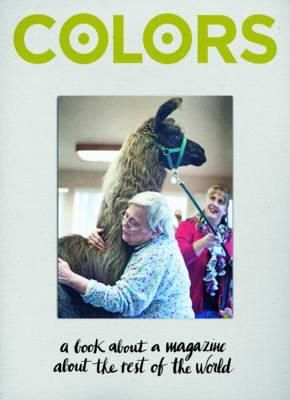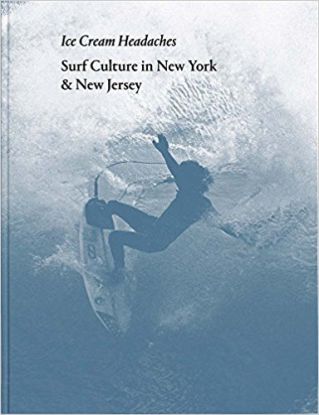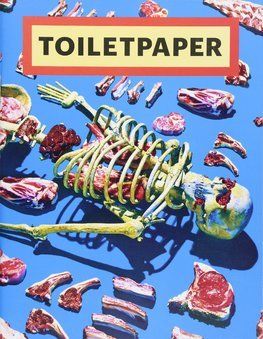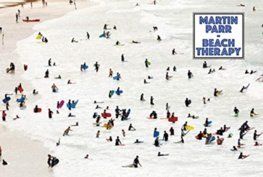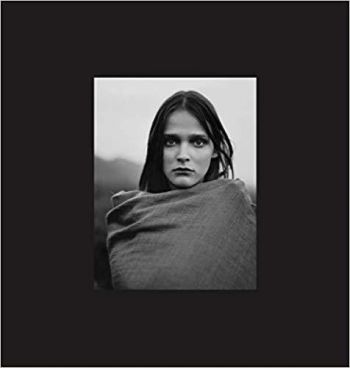Damiani
vydavateľstvo
Music
For more than three decades, photographer Deborah Feingold has revealed striking truths in her extraordinary portraits. MUSIC concentrates on her work with musicians-from Bono to Chet Baker, James Brown to the Replacements, and Alicia Keys to Mick Jagger. The images are a kind of secret collaboration, character studies that speak with warmth and gracefulness about both the artist and the art. The images in MUSIC often express great wit and humor, but more prominent is Feingold's desire to set her subjects at ease and encourage them to feel vulnerable enough to give something to the camera-and ultimately to the viewer. What they reveal often bears a rich relationship to their music--in the beauty and simplicity of their demeanor, in the dynamic between themselves and their settings, in the eloquence of their faces, in the charged visual energy of their movements, in the calm contemplation of their reflection, in the force and power of their eyes. Taken together, the photographs in MUSIC ultimately reveal Feingold's profound empathy, her ability to feel, understand, and communicate the inner lives of others. You leave these pictures with a greater understanding of these musicians' gifts and their struggles, their passions, and the private peace they make with themselves--or try to--when no one else is there to notice or care. Except that, in these cases, someone was there: Deborah Feingold.
Vypredané
41,33 €
43,50 €
Landscape
The sites depicted in LaChapelle's LAND SCAPE represent the globally networked industrial infrastructure of oil production and distribution. The gas stations and refineries that populate iconic locations are staged as architectural avatars of a planet coping with the stresses of peak-oil - even as the buildings' dazzling spectacle and retro-future aesthetic distracts from the dangers of their function. Both bodies of work use handcrafted scale models, constructed of cardboard and a vast array of recycled materials from egg cartons to tea canisters, hair curlers, and other by-products of our petroleum-based, disposability-obsessed culture.
Vypredané
39,85 €
41,95 €
Colors - A Book About a Magazine About the Rest of the World
he book COLORS aims to explore the best of visual and textual material of the 90 issues of the magazine, created by the photographer Oliviero Toscani and the art director Tibor Kalman in 1991. The content is presented transversely through a subdivision in ten macro-themes which highlight the "Tumblr ante litteram" nature of the magazine. Twenty-five years of images and texts are shaken and served using ingredients from different issues. The idea is to tell COLORS by using its own words, in a visionary journey through time, between irony and semiotics, rereading the analysis of the world carried out by the magazine, acknowledging its high research value. Among the objectives: - celebrating and narrating COLORS in a non-direct and linear way. - not providing an axiomatic volume or making it a monument, but rather making it a subject still alive and able to talk about today's world through the work carried out on the world back then.- producing an object attractive to both the collectors and those who do not know the magazine at all, trying to intrigue those who may have only a few numbers, those who believed it was no longer published and the most faithful readers. The project becomes the clarification of the exhibit of the "rest of world" made by COLORS over the years. The themes are: - BANG! (bang, bang, bang!) weapons, violence, lust, shock; - I WANT TO BELIEVE (oh my God, it's Sunday! - Time to wake up and smell the regret) everything relating to Sunday, faith, cults, national sport, what we worship; - PLACES (People write songs about places like you - You have ruined my life) places, countries, cities, and the rooms where things happen; - THAT'S AMORE (more amore) heart, physical love, the good despite everything - DRINKING BUDDIES (did somebody say "proprioception"?) portraits of people with stories to tell, human cases, superheroes; - ELVIS (the Good, the Bad and the Elvis) fame, excess, degeneration, disguise, kitsch. - WHERE THE HELL IS MY TAIL? ("Tienes hair muy bonito!" "Quien, yo?") the animal world, with hair, tails and everything else, missing links (?) included; - COLORS IS THE NEW BLACK the essence of COLORS through the use of colors, all the colors of its themes; - FUTURE IS TEN MINUTES AWAY (I wanted to be an architect but my parents said the) the future, predictions about the future and how we get ready for it. A tribute to COLORS # 13 ends off the volume: it is the issue where Tibor Kalman narrated without the use of words.
Vypredané
51,30 €
54,00 €
Toiletpaper - Issue 14
Toilet Paper is an artists' magazine created and produced by Maurizio Cattelan and Pierpaolo Ferrari, born out of a passion or obsession they both cultivate: images. The magazine contains no text; each picture springs from an idea, often simple, and through a complex orchestration of people it becomes the materialization of the artists' mental outbursts. Since the first issue in June 2010, Toilet Paper has created a world that displays ambiguous narratives and a troubling imagination. It combines the vernacular of commercial photography with twisted narrative tableaux and surrealistic imagery.
Vypredané
12,30 €
12,95 €
Julien Roubinet - Ice Cream Headaches
Little known to many who live there and to the throngs of tourists who pass through each year, New York and New Jersey are home to a diverse and vibrant cold water surfing community. Ice Cream Headaches captures a snapshot of this often overlooked facet of America's most dense metropolis. Over a span of four years, writer Ed Thompson and photographer Julien Roubinet have logged more than 5,000 miles from Eastern Long Island to Cape May in South Jersey to interview and photograph forty surfers, surf board shapers, artists and documentarians of the culture personally. From local legend and Montauk fisherman Charlie Weimar to Pulitzer-prize-winning author William Finnegan and professional surfers with global followings such as Quincy Davis, Mikey De Temple and Balaram Stack, this new monograph highlights surfers who experiment with new forms, materials, ideas or surfing styles. Across 192 pages, the book features four essays rich with quotes and anecdotes, over 150 photographs, and a foreword by iconic portrait and surf photographer Michael Halsband. Ice Cream Headaches takes the reader inside the surf breaks and stomping grounds of the surfers who call New York and New Jersey home, surfers who are willing to pull on a 5mm wetsuit, wade through a foot of snow on the beach, and battle thirty mile per hour winds for a few fleeting moments inside a yawning barrel.
Vypredané
37,95 €
39,95 €
Michael Stipe - Volume 1
Volume 1 is the first in a series of publications presenting different aspects of Michael Stipe's multifaceted artistic practice. Volume 1 includes a focused presentation of 35 images, bringing together 37 years of Stipe's practice of creating and collecting photographic materials, in addition to posing as a subject in the photographs of others. The book centers around his unconventional and deeply personal understanding of queerness, conflating figures in his own life with those in American history and popular culture. Throughout the book, the formal qualities of images often relate in a poetic or lyrical way, allowing for unlikely juxtapositions and connections to emerge between subjects. These relationships transcend logical associations between time, place, and social structures. Volume 1 is produced in collaboration with artist Jonathan Berger and designer Julian Bittiner.
Vypredané
42,70 €
44,95 €
Toiletpaper 15 (Limited Edition)
Toiletpaper is an artists' magazine created and produced by Maurizio Cattelan and Pierpaolo Ferrari and born out of a shared passion for images. The magazine contains no text. Each picture springs from an idea, often simple, and through a complex orchestration of people it becomes the materialization of the artists' mental outbursts. Since the first issue, in June 2010, Toiletpaper has created a world that displays ambiguous narratives and a troubling imagination. It combines the vernacular of commercial photography with twisted narrative tableaux and surrealistic imagery. The result is a publication that is itself a work of art which, through its accessible form as a magazine, and through its wide distribution, challenges the limits of the contemporary art economy.
Vypredané
42,70 €
44,95 €
Toiletpaper 13
Toiletpaper is an artists' magazine created and produced by Maurizio Cattelan and Pierpaolo Ferrari and born out of a shared passion for images. The magazine contains no text. Each picture springs from an idea, often simple, and through a complex orchestration of people it becomes the materialisation of the artists' mental outbursts. Since the first issue, in June 2010, Toiletpaper has created a world that displays ambiguous narratives and a troubling imagination. It combines the vernacular of commercial photography with twisted narrative tableaux and surrealistic imagery. The result is a publication that is itself a work of art which, through its accessible form as a magazine, and through its wide distribution, challenges the limits of the contemporary art economy.
Vypredané
12,30 €
12,95 €
William Coupon: Portraits
This long overdue monograph presents a panorama of portraits from the photographer William Coupon. Coupon was given wide access to artists, musicians, politicians, authors, and the world's indigenous people on assignment from major publications like Time , Rolling Stone , The New York Times , Esquire , and The Washington Post . He photographed his subjects against a mottled backdrop of hand-painted Belgian linen, often in a classically lit medium shot format, inspired by Dutch masters such as Rembrandt and Holbein.
Coupon has remained true to this method, whether working in the Oval Office in Washington D. C. or a tribal hut amongst the Pygmy in the Central African Republic, or the Caraja in the Brazilian Amazon.
Environmental images compliment the more formal portraits. Portraits includes iconic images of Mick Jagger, Miles Davis, Elie Wiesel, David Byrne, Presidents Nixon, Carter, Bush, Trump, George Steinbrenner, Jean Michel Basquiat, Andy Warhol, and Prince Philip among many others from Haiti, Panama, Holland, Northern Scandinavia, Australia, Malaysia, Turkey, Italy, Peru, Mexico and other places. Coupon has created a collection that documents his times but also captured his generation in all its vibrancy.
In his work, he seeks to present a truly egalitarian portrait of humanity integrating common people with the wealthy, powerful, and famous.
Vypredané
47,03 €
49,50 €
Arthur Elgort Jazz
This is the first book dedicated to Elgort's Jazz portraits and the list of names it includes constitutes a veritable pantheon of jazz greatness. Featured in the book are portraits of Wynton Marsalis, James Carter, Roy Haynes, George Benson, Milt Hinton, Walter Blanding, Michael Bowie, David Sanchez, Angelo Debarre, Dexter Gordon, Sonny Rollins, Joshua Redman, James Moody, Jay McShann, Pat McFeeny, Jimmy Scott, Dorothy Donegan, Illinois Jacquet, Ornette Coleman, Don Byron, Aaron Neville, Dizzy Gillespie, Art Blakey, John McLaughlin, Jesse Davis, Lionel Hampton, Clark Terry, Christian Mcades, Ron Carter, Wycliff Gordon, Sam Newsome, Roy Haynes, Jon Faddis, Roy Hargrove, Max Roach, Jerome Harris, Jack DeJohnette, Michael Cain, Al Grey, Thelonius Monk Jr., Benny Carter, Jon Hendricks, Stefan Harris, Jervan Jackson, Kenny Baron, Doc Cheatham, Arnett Cob, Tommy Flanagan, Jason Moran, Luther Lafatti, Bradford Marsalis, Delfeayo Marsalis, Jason Marsalis, Kenny Garrett, Olu Dara, Jesse Davis, Buddy Tate, Anton Rooney, Flip Phillips, and Sam Rivers. Every now and then a fashion model of the moment pops up in a picture creating a fitting link between this body of work and Elgort's fashion pictures.
Vypredané
42,28 €
44,50 €
Barry McGee
Barry McGee is an artist who takes uncertainty and unpredictability as his guiding principles. Every exhibition is different. His installations have featured everything from robotic graffiti writers to entire shipping containers and automobiles. Published to accompany an exhibition at Cheim & Read, New York, this artist's book features new paintings, sculptures, photographs and images of site-specific installations. McGee's work defies easy categorization and explanation but it's possible to read into this latest body current events in the world at large.
Vypredané
29,93 €
31,50 €
Mongolia
Mongolia is a project which Frederic Lagrange began in 2001 and has spanned over 15-years, during which he took 12 trips in all four seasons, covering vastly different regions of the country. This book is his visual portrait of Mongolia and her people captured in detail in a genuine, human form through a compilation of landscapes and portraits. The book offers the viewer an intimate look and visual journey into a still largely unknown and intriguing place. The book is intentionally printed in large format, to maximize the impact of the smallest details and the different emotions of everyday life in the countryside and cities. The entire selection of images have been shot on negative film which offers a painterly quality with grain and with vivid colors. To Lagrange knowledge, this is the only body of work about Mongolia that offers such an extensive coverage of the country.
Vypredané
217,55 €
229,00 €
Martin Parr: Beach Therapy
During his long career as a photographer, Martin Parr has always photographed on beaches, particularly in the UK. He has often used the beach as a laboratory to experiment with new cameras and techniques. So far example, when he changed from black and white to medium format colour in the early 80s his first major project was about New Brighton, a run down seaside resort near Liverpool.
In recent months he has started exploring the beach with the aid of a telephoto lens. This lens is rarely used in the world of art and documentary photography so it is a challenge to find new ways of using it. Often this involves incorporating the vegetation on the perimeter with the beach as a backdrop, both in and out of focus.
So over his long career he has tried everything from a close up macro lens, a medium format wide angled camera and finally this latest offering with the telephoto.
Vypredané
36,05 €
37,95 €
Toiletpaper Magazine 17
Toilet Paper is an artists' magazine created and produced by Maurizio Cattelan and Pierpaolo Ferrari, born out of a passion or obsession they both cultivate: images. The magazine contains no text; each picture springs from an idea, often simple, and through a complex orchestration of people it becomes the materialization of the artists' mental outbursts. Since the first issue in June 2010, Toilet Paper has created a world that displays ambiguous narratives and a troubling imagination.
Vypredané
12,83 €
13,50 €
Jacopo Benassi: Bologna Portraits
Bologna Portraits is the portrait of one of the most charming and least well-known Italian cities portrayed through the faces of the people who live there today. It started during the artist's many stays in the town. Discovering Bologna little by little, Jacopo Benassi took pictures, like a sort of notebook, of the faces of the most interesting people he met during his time there.
After a few months he already had a large portfolio of people which, like in a mosaic, built a bigger portrait of the whole city today. Bologna is probably the best-kept secret of the Italian cities with a great past. Large-scale tourism has never affected it, but in recent years it has been discovered by a growing group of sophisticated travellers passionate about art, culture, cinema and food.
The portraits are a mix of young artists, writers, minor and great musicians, leading businessmen, famous bar tenders, tailors, professors at the local university (the oldest in the Western world), personalities and international artists such as Nino Migliori and Luigi Ontani. All of them born or living in Bologna. The whole book is a study of real faces that are able to be meaningful and to tell a story, and recall a tradition like the study of faces by Pier Paolo Pasolini in some of his films, or Andy Warhol's Screen Tests.
But at the same time, they recall a masterpiece like Un Paese, the book produced by Paul Strand and Cesare Zavattini. The book includes a text by art critic Antonio Grulli.
Vypredané
47,45 €
49,95 €
Jan Welters: Profile
Jan's defining images cross all kinds of fashion barriers. His respect for the models he works with is evident. His models are raw, sometimes slighty unconventional beauties, quite often with very little hair and make-up. Jan's images are pure, powerful and evocative, getting to the very soul of the subject. Whether its an androgynous looking girl with a cowboy hat, a model smoking a cigarette on a beach, a movie star or a picture of his wife or children, the pictures are captivating in their simplicity with a very clear style that belongs only to him. His approach to his craft remains unchanged over decades, his style clear, avant-gard and transcendent of trends. Featured are among others Cate Blanchett, Helena Christensen, Eva Herzigova, PJ Harvey, Drew Barrymore, Kirsten Owen, Kylie Minogue, Tatjana Patitz, Jessica Chastain, Christy Turlington, Tilda Swinton, Vanessa Paradis, Gisele Bundchen, Natalia Vodianova, Courtney Love, Doutzen Kroes, Laetitia Casta, Charlotte Gainsbourg, Jennifer Connelly, Milla Jovovich, Bella Haddid and Helen Mirren.
Vypredané
47,45 €
49,95 €


